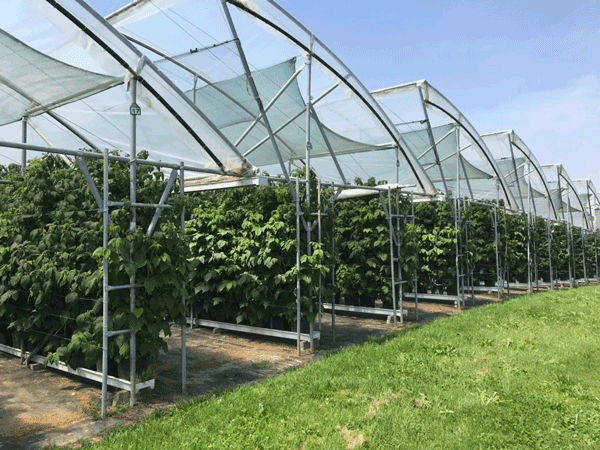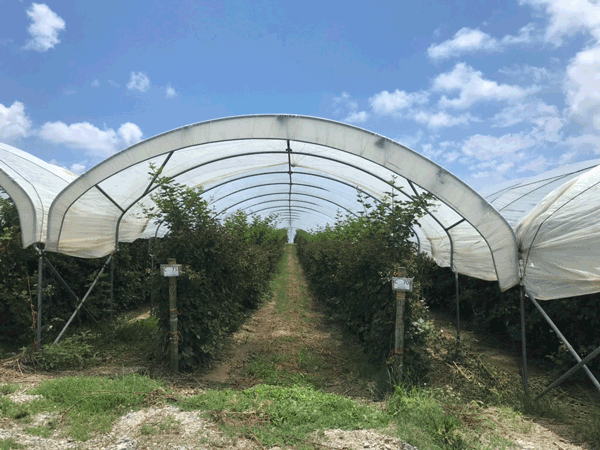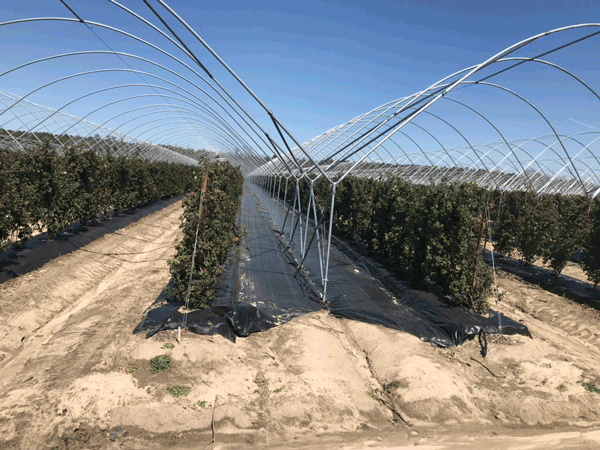High tunnels are semi-permanent structures made of steel pipe arches and covered with polyethylene plastic to create a protected environment for plants. The production of caneberries in tunnels is the standard practice in California and Europe (Figure 8-1), although it is a relatively new production system in our region.
Raspberries and blackberries benefit from growing in high tunnels, which can extend the harvest season, improve fruit quality and yield, reduce moisture on foliage and diseases, and enable growers to harvest fruit when it is raining. Studies in North Carolina and Arkansas have shown that primocane-fruiting raspberry cultivars grown in tunnels resulted in higher yields than those grown in the field. Compared to field-grown raspberries, tunnel-grown yields were 30% greater or more, depending upon the location and growing conditions. In cold winter locations, tunnels may also extend the normal summer harvest season into the fall.
Production of blackberries under tunnels is becoming increasingly popular in some states in the southern region of the US. The tunnels in this region are used primarily as a rain shelter during the summer harvest season (Figure 8-2). The use of a tunnel ensures that a crop can be harvested even on rainy days. Some growers apply a light shade cloth on top of the plastic to reduce temperatures and solar radiation in the tunnel. The plastic is removed during the winter (Figure 8-3). Contact your local Cooperative Extension service for recommendations for the use of tunnels for caneberry production in your area.
For more information on caneberry production in tunnels: High Tunnel Production Guide for Raspberries and Blackberries, 2019 (PDF, 11.2 MB).
Publication date: Feb. 2, 2023
AG-697
Other Publications in Southeast Regional Caneberry Production Guide
- Introduction
- Cultivars
- Site Selection
- Site Preparation, Planting, and Establishment
- Plant Growth
- Pruning and Training
- Trellis Systems
- Tunnel Production
- Water Management
- Integrated Pest Management and Pollination
- Fertility Management
- Fruit Development
- Harvesting and Postharvest Management
- Food Safety Considerations for Caneberry Production
N.C. Cooperative Extension prohibits discrimination and harassment regardless of age, color, disability, family and marital status, gender identity, national origin, political beliefs, race, religion, sex (including pregnancy), sexual orientation and veteran status.



